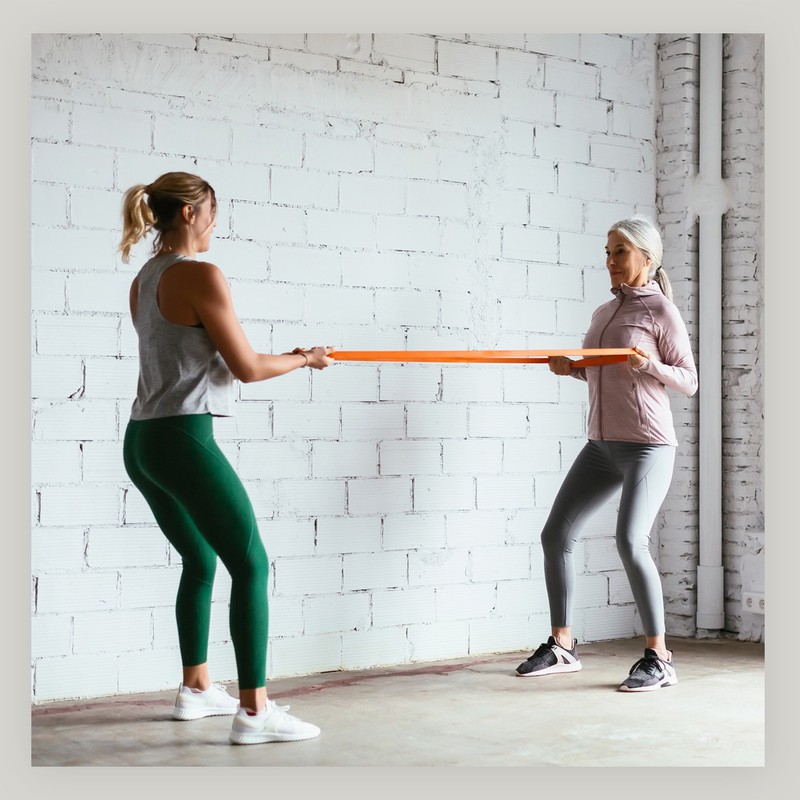
Why You Should Be Exercising With A Resistance Band
What Are The Different Options?
Resistance bands may not look like much, but they work the body in a similar way to a pair of dumbbells, so using one will count towards your weekly strength training quota. Whether you’re already into fitness or are just easing yourself back in, the joy of a band is its ability to add bespoke resistance where and when you need it. You can either opt for a smaller looped resistance band, which slots around your knees and ankles, or a longer, flatter resistance band, which can be tied to the likes of door handles to build muscle in a different way. So, which should you be using? “It depends which body part or area you want to work on,” says Louisa Drake, founder of The Louisa Drake Method . “Flat resistance bands are super versatile and ideal for achieving a total-body workout as they are easy to wrap around your hand and you can easily adjust the length. These are the most popular style of resistance band and are used in most gyms and by physiotherapists. A looped band, however, is great to target the legs and glutes or for more precise work on the triceps and biceps.” You’ll also want to think about the strength of your bands, Louisa says. “In general, a thicker band equals more resistance, so play around with different bands and find a strength that works for you.” Consider buying a pack of bands with varying resistances – you may also find that different parts of your body can take more resistance than others.
They Provide The Perfect Level Of Resistance Training
A band – whether used on your arms or legs – has a real advantage over free weights, particularly as you age, explains Louisa. “Resistance bands work your muscles just like weights do, but unlike weights, resistance bands don’t rely on gravity to provide the resistance. With a band, the tension is constant, meaning you’ll stimulate muscle growth and hit a full range of motion, working more places and muscle compared to free weights. This helps to increase flexibility, strength and control.” Studies show resistance training is particularly important as you age, adds Louisa. “Strength training in your 50s, 60s and beyond should be your go-to method of exercising as it’ll help you maintain muscle mass while also improving levels of enzymes involved in fat burning. It’ll also keep you mobile whilst helping reset your adrenals for better stress management.”
They Can Help Build A Stronger Body
Used originally for muscle rehabilitation, resistance bands offer a safe and controlled way to build strength. “A resistance band can help build muscle mass without overdoing it,” explains Louisa. “In fact, research shows that a training programme using resistance bands is both a practical and effective way of increasing strength in adults over the age of 55. With age comes the loss of muscle mass and other health issues, which means free weights may not be right – they can often be overly challenging and too harsh on an ageing body. You may also have injuries that never healed properly, or joints that aren’t as strong as they used to be. A resistance band will help with all of this.” Maintaining strong muscles through resistance training will help with strength as well as balance and coordination – a critical element in preventing falls, which can lead to osteoporosis-related fractures.
Stick With It & You’ll See Results
Don’t expect miracles overnight but incorporate a resistance band into your routine and you should see results within eight weeks, says personal trainer Christina Howells. “As with any resistance programme, consistency is key,” she says. “Use a resistance band two to three times a week, alongside steady progressions (i.e. increasing either the strength of the band or the number of reps), and you should see results within eight weeks. Just remember that variables such as diet and cardiovascular factor into this, too. No-one can out-train a bad diet or a lack of movement.”
Just Be Sure To Use Them Properly
The benefits of a resistance band are endless, so long as your technique is on point. “Always make sure you are controlling the motion in both directions when using a band,” Louisa advises. “It’s very easy to let the band snap you back into a starting position when the band is pulled very tight. Always move slowly and in control; never strain yourself and instead use a lighter band until you can perform an exercise with ease.”
Want to get involved? Here, the experts share their favourite moves for building full-body strength with a band…
To Strengthen Your Hips
“A lateral band walk will strengthen your hip muscles, allowing you to be better prepared for daily movement, especially if you spend a lot of time sitting. Place a short, looped resistance band around both ankles and stand with your feet apart so you can feel the tension in the band, with your knees slightly bent in a semi squat. Step your left leg sideways as wide as you can with good form, keeping the hip bones pointing forwards and abdominals engaged. Then step the right foot inwards towards the left without losing tension in the band. Repeat six to ten steps in each direction.” – Christina
To Build Strength In Sore Knees
“If your knee struggles to track correctly or feels unstable, work on activating your glutes and quads to help protect the knee and the smaller muscles on the inside and outside of the knee area. Put a resistance band around your thighs just above your knees and place your feet slightly wider than your hips. Lower into a squat and hold, carefully pushing outwards against the band as you squat; lower and hover as many times as you can, aiming for 20 reps to start. To challenge the area around the pelvis and leg a little more, add in little steps in and out.” – Monique Eastwood, founder of the Eastwood Movement Method
To Ease Neck Pain
“A band pull-apart activates the muscles in your upper back and shoulders, which combats desk-bound posture and reduces neck pain. Stand with your knees slightly bent and feet shoulder-width apart. Grip the middle section of a band with both bands at shoulder height, palms facing down. Keeping your arms straight, pull the band out until your shoulder blades contract. Slowly return to the starting position and stretch, squeeze and release for 30-60 seconds.” – Louisa
To Tone The Arms
“Try a standing bicep curl to tone the arms. Your biceps are a major muscle, so training them will have a significant impact on the appearance of your arms. Stand with your feet shoulder-width apart with your feet placed over the middle of a long band. Grab an end in each hand, starting with your arms down at your sides. With your palms facing in front of you, pull your arms towards your shoulders by bending at the elbow until you get a good bicep contraction. Slowly lower back down and repeat for 30-60 seconds.” – Louisa
Shop Our Edit Below...
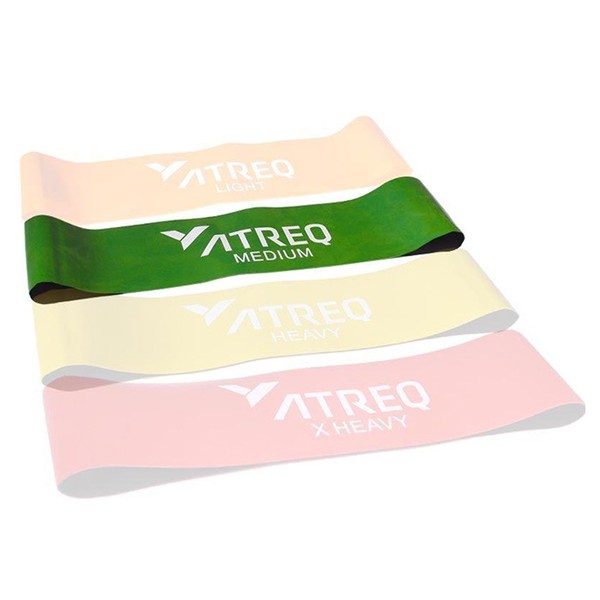
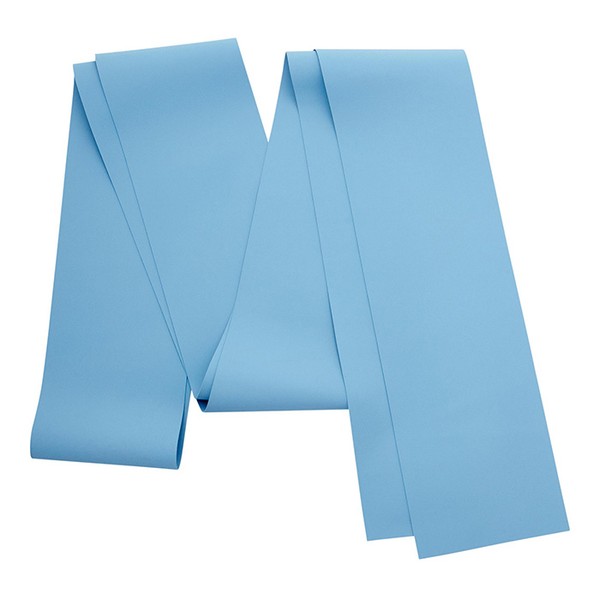
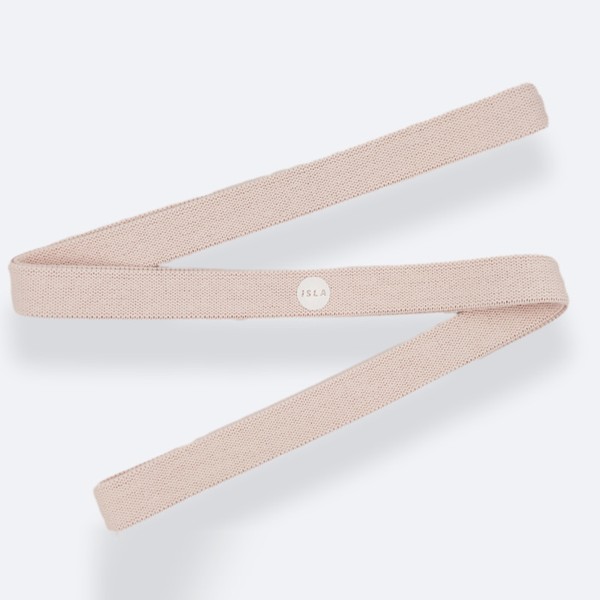
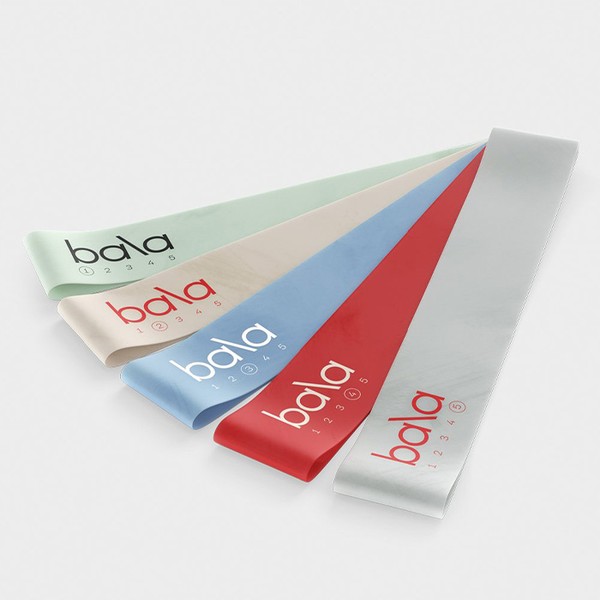
For more information visit LouisaDrake.com, ThatGirlLondon.com and EastwoodFit.com
DISCLAIMER: Features published by SheerLuxe are not intended to treat, diagnose, cure or prevent any disease. Always seek the advice of your GP or another qualified healthcare provider for any questions you have regarding a medical condition, and before undertaking any diet, exercise or other health-related programme.
DISCLAIMER: We endeavour to always credit the correct original source of every image we use. If you think a credit may be incorrect, please contact us at info@sheerluxe.com.

